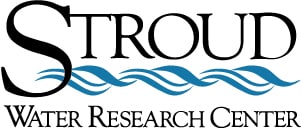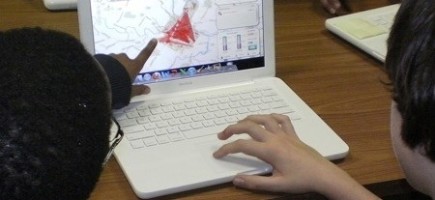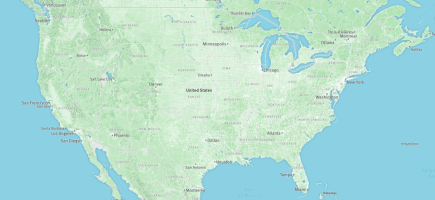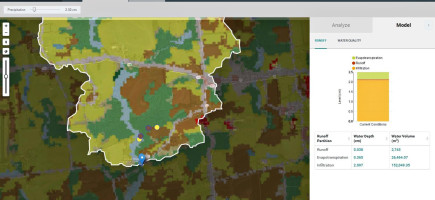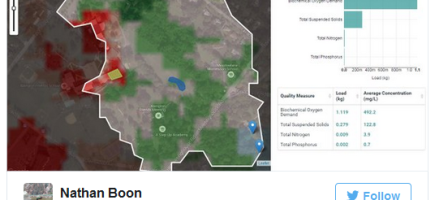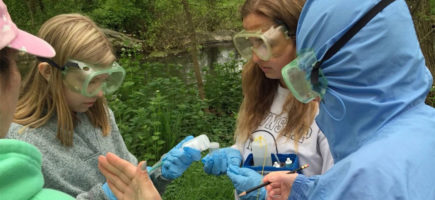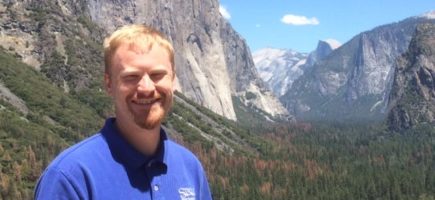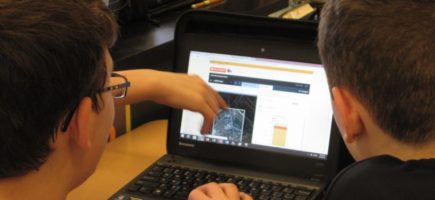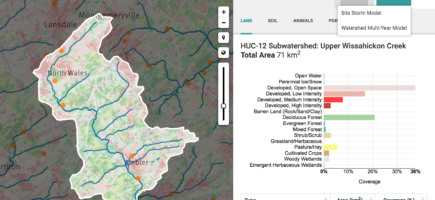The expanded module will help high school students across the country learn how land use impacts freshwater quality in their own geographic regions.
Stroud Water Research Center, in collaboration with the Concord Consortium and Millersville University of Pennsylvania, received a $2.9 million dollar grant from the National Science Foundation (NSF) to dramatically expand Model My Watershed (MMW), part of the WikiWatershed® suite of online tools. This application allows users to explore how land use affects stream ecology and hydrology.
The application was originally built for portions of Southeastern Pennsylvania and Northern Delaware. The grant will allow Stroud Water Research Center and its partner organizations to expand the website into a national teaching resource for high school science teachers.
The application, funded through the NSF Discovery Research K-12 program, will provide students with problem-based, place-based, hands-on learning experience in which they will use real data, authentic geospatial analysis tools and models. They will also have opportunities to collect and share their own supporting data with others in the WikiWatershed® online community.
Through geospatial analysis, students will be able to explore the interrelationships of geographic, social, political and environmental factors on freshwater ecosystems and see how making positive changes to their watershed environment can correct existing problems, such as: reduce stormwater runoff or trap soil sediments before they wash into a stream. Students will also be able to collect data on specialized sensors that attach to tablets, included in the curriculum resources.
“This application will help students understand the choices we must make to balance human needs with what’s best for the ecosystem,” said Susan Gill, Ph.D., education director at Stroud Water Research Center. “The web application will be based on Geographical Information Systems and our instructional materials will teach students to analyze real data about human impacts to the environment as they relate to land use, water quantity, water quality and socioeconomic consequences to communities.”
Gill added that the educational program will teach high-school students a systems approach to problem solving through hands-on activities and tutorials based on local data and issues.
“This will provide students with an opportunity to contribute to their communities while they are solving problems they find interesting. We hope this will also encourage students to pursue emerging careers in geospatial and environmental analysis,” she said.
“The application will use databases and community-led cyberinfrastructure that are now forming the basis of EarthCube, an initiative of the National Science Foundation that entails enormous data sharing across the geosciences field,” said Anthony Aufdenkampe, Ph.D., a specialist in organic and isotope geochemistry at Stroud Water Research Center who is collaborating with Gill on the project.
Azavea Inc. (now Element 84), will develop the geospatial MMW application and the Applied Physics Laboratory of the University of Washington will integrate and expand the Northwest Association of Networked Ocean Observing Systems (NANOOS) data visualization portal.
Initially the website will be introduced to urban and rural schools in California, Iowa, Kansas, Pennsylvania and Virginia. Following the pilot study, environmental educators at Stroud Water Research Center will hold train-the-trainer programs in diverse geographic locations to teach science teachers how to introduce it to schools in their regions.
The project will fund each center to provide the program for 175 teachers in two cohorts across five states. The first cohort will be held in the summer of 2015, the second cohort will be held the following summer.
